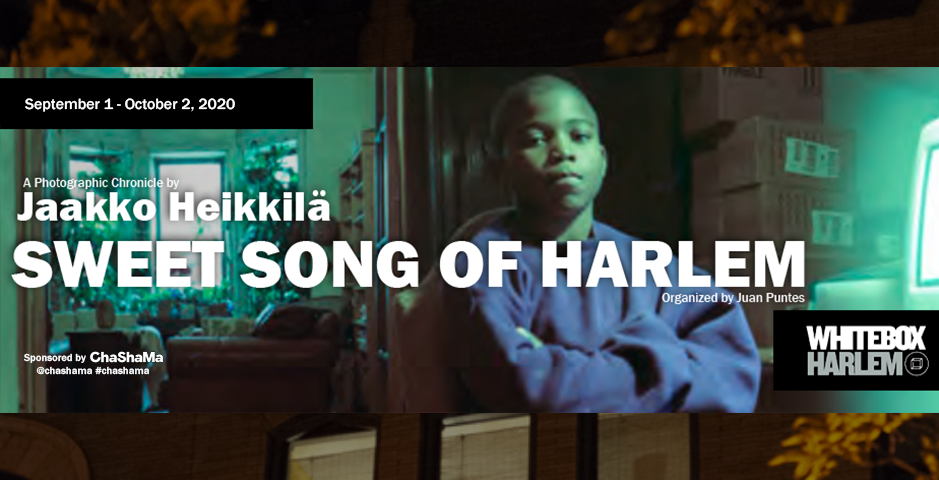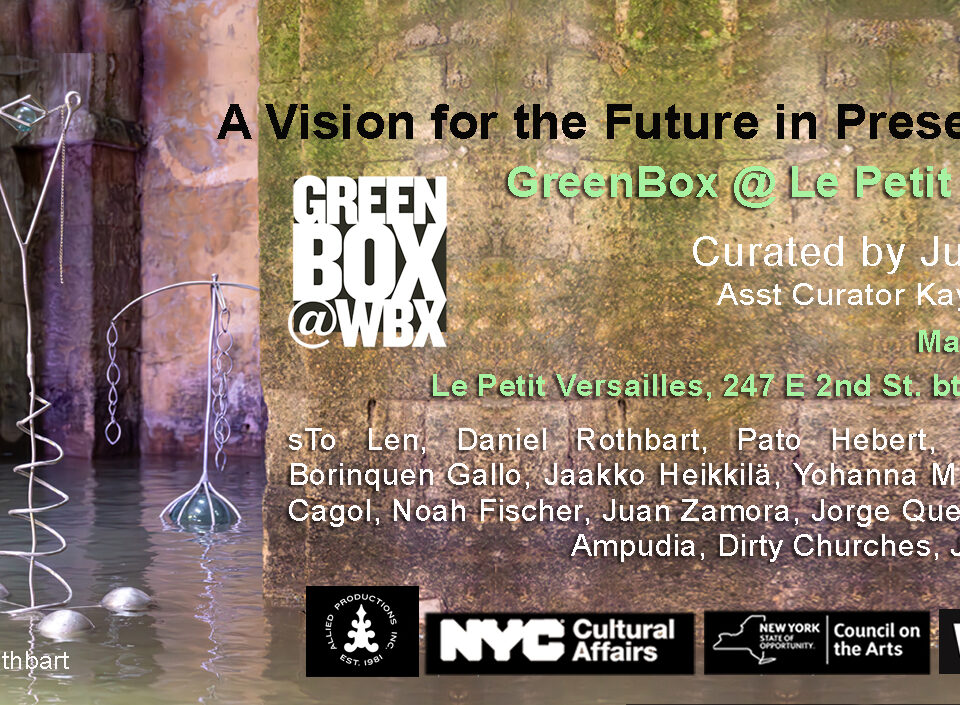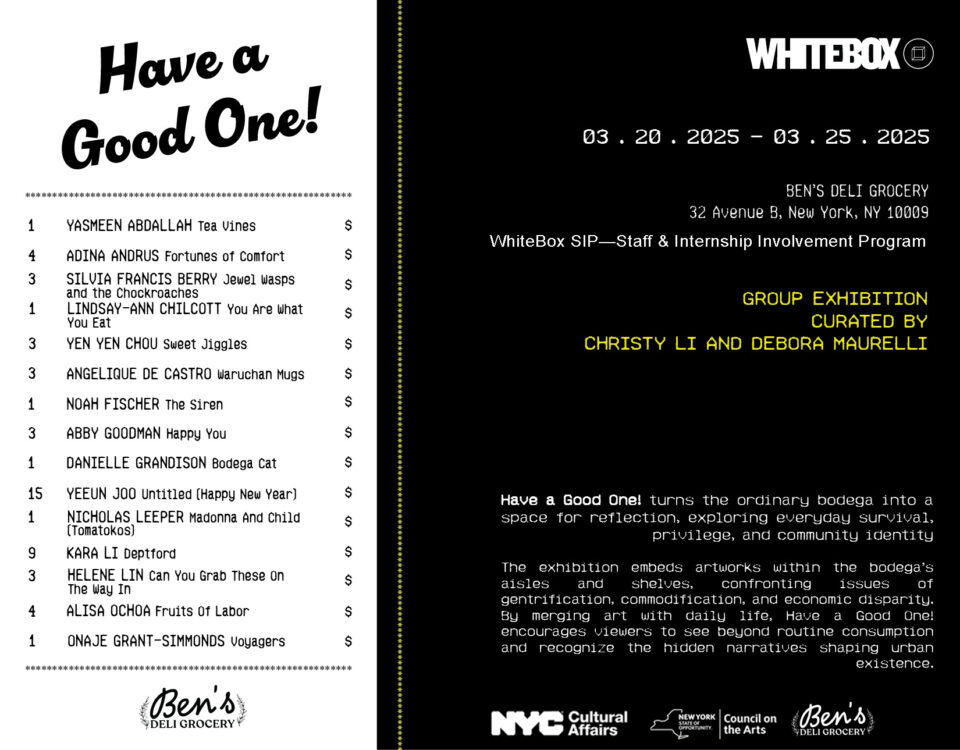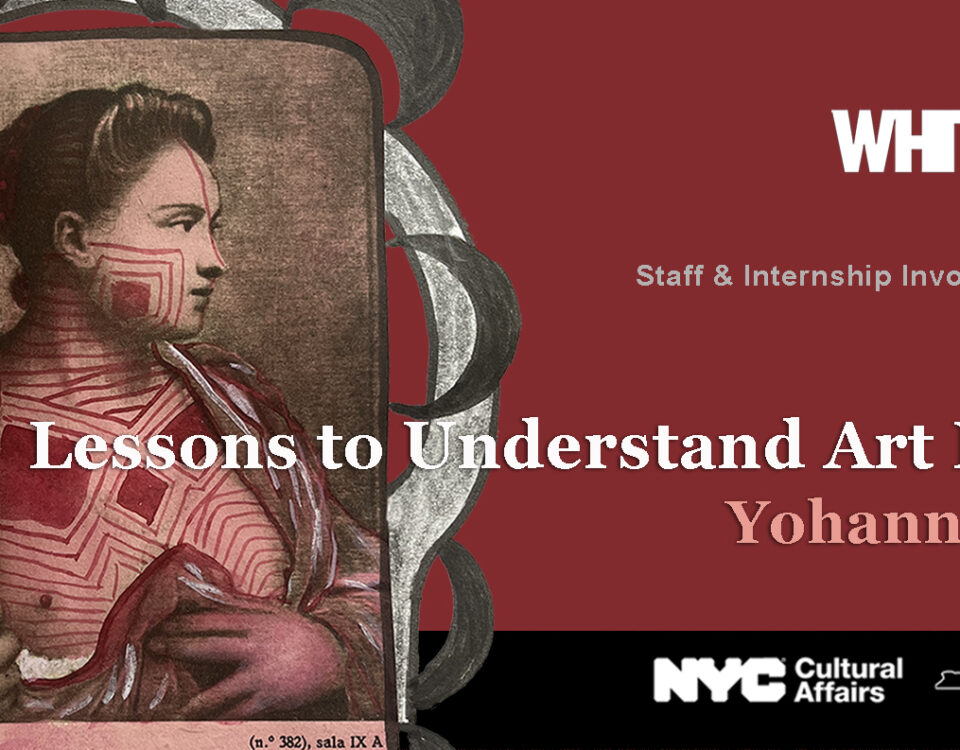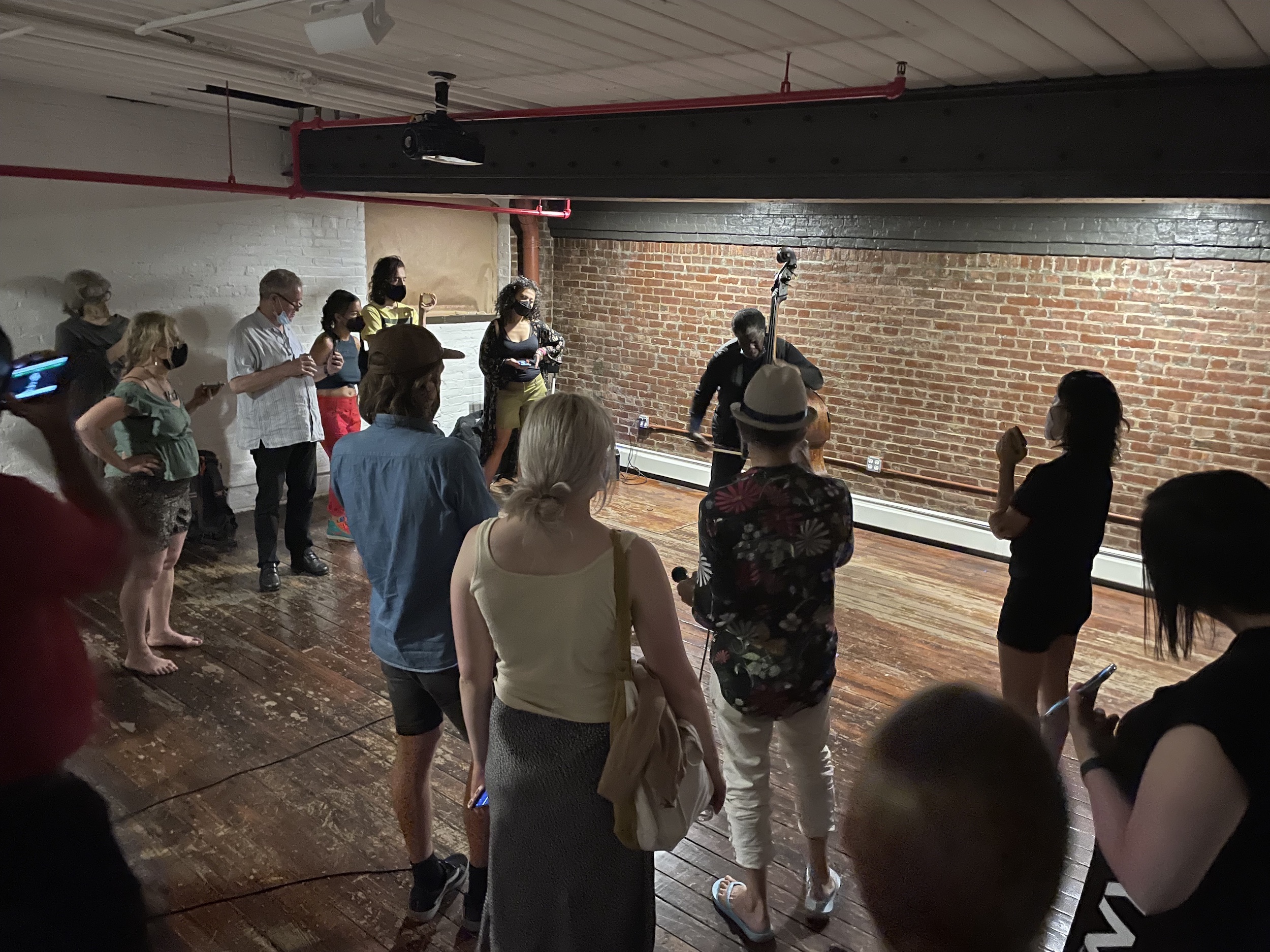
Live from Sunset Park – Ak2deru, Masa Hosojima, Hans Tammen, Kristin Norderval
July 28, 2021
Venice in Harlem
August 23, 2021An Exhibition of Photography by Jaakko Heikkilä
Engineered by Juan Puntes
Presented by WhiteBox Harlem at El Barrio’s Artspace PS109
September 1 – September 25, 2021
215 E 99th St, New York, NY 10029
Tues-Sat, 11-6PM
“A remarkable thing about an open window is that it lets in both light and sound. For those of us who are curious about what is happening elsewhere it brings us into contact with either what lies outside of the space we know or control, or what exists in a private space we are barred from knowing.
– as per Seph Rodney
“Photographers often proceed like voyeurs. They seek out interesting scenes or vistas, freezing moments with their cameras and then move on. Jaakko Heikkilä operates more like a painter, investing time and emotional energy in an effort to really know his subjects. The result is a portrait of a place and its people that brings them forward in all their complexity.”
– as per Eleanor Heartney
Press Release
Contact: juan.puntes@whiteboxny.org
Jaakko Heikkilä is a northern Finnish world traveler and photographer who became known as a depictor of minority peoples and groups living in the shadow of major cultures, capturing the essence of their identities and living environments.
In 2001, he stayed at the Finnish Cultural Institute’s New York artist’s residence for three months. Out of curiosity, he set out to explore Harlem. This district, called the “Mecca of African Americans” since the 1920s, and the cradle of the Harlem Renaissance, immediately fascinated Heikkilä. In stark contrast to the fierce pulse of lower Manhattan, Harlem felt like a completely different world, where life was pulsing slower and more relaxed.
Harlem has traditionally been described as a neighborhood of hardship and social conflict. Heikkilä was interested in experiencing Harlem, with humanity at its center. Thus began one of Heikkilä’s key projects, the “Sweet Song of Harlem,” a visual exploration of time travel that has spanned over twenty years.
At first, Heikkilä just walked around the area, stood at the intersections of the streets, watching people, houses, and moods. Up until this point, he had always had a phenomenal ability to approach people. In previous working sojourns, making contact with locals and gaining their trust had been easy and natural. But now he felt an invisible wall of the big city preventing him from communicating with the residents.
Heikkilä was determined to connect with the city. He searched for the keys in his mind to open the doors inside the wall. He printed an English text on the premises of the Cultural Institute, in which he described the basic motives of his work. He also printed a copy of his passport. Alongside these, he took pictures of previous projects in Russia and the Tornio Valley, on the northern border of Finland and Sweden. Heikkilä settled on a corner of the street in Harlem, placed the camera on a tripod, and began photographing the wall. Suddenly, charismatic, personable people began to flow past him. Whistling, good-natured walkers attracted a photographer with their personality. He showed the passersby his text and the images from his previous projects and invited them to have their pictures taken. Thus, portraits of Harlem began to accumulate.
Heikkilä treats his Harlem theme with different shooting methods and angles of view, so that the end result is a multifaceted narrative whole. The series consists of people indoors and outdoors, extensive panoramic shots and intimate close-ups, some of which are staged while others are spontaneous snapshots. Protagonists range in age from the elderly to young children, and their social status also varies. Some pose with pride of their wealth in their spirited dwellings. In others, the mere interior and street view speak their own language. As with all of Heikkilä’s works, the fine use of color and light remain key elements of his expression.
Heikkilä’s work is rooted in a strong tradition of documentarism in Finnish photography, but traditional documentation has never fully satisfied the artist. Beginning with one of his earliest photographic series, which captured the identity and living environment of the inhabitants of his homeland, Heikkilä had a desire to look deeper into the surface, into people’s souls. At that time, Heikkilä started working with a panoramic camera, which he continued to use in his Harlem series. This technology has a unique expression, expanding the space and reducing the human scale, thereby drawing attention to the intricate details of the image.
“Sweet Song of Harlem” includes a number of different photographic techniques — panoramic views, interior and exterior shots, traditional “en face” close-ups where protagonists look calmly at the camera and the viewer, and even a Serbian photographic technique in which the camera is brought so close to the face that only their central area is visible in the picture, mostly as a profile. These “facial landscapes” reveal every little detail of the person’s face — every groove and pore. These intense close-ups exude a surprising mystery because the majority of the protagonists’ faces are out of sight.
Most of the images that depict a larger environment or capture the intimate setting of a protagonist’s home, include a window — a motif whose descriptive possibilities Heikkilä has often used in his photographic series. The image of the window has fascinated artists throughout the ages. In painting, this fascination can be tracked through the 15th century. In photography, it begins in 1826 with a heliograph made by the Frenchman Joseph Nicéphore Niépce, which captured a view from the window of his study. The window acts as a transparent interface between indoor and outdoor space, between the private and public. There are many different meanings, metaphors, and symbolisms associated with this image.
In many of Heikkilä’s works, a window appears in both interior and exterior shots. These illuminated windows act as a symbol of hope — of life and human presence. In the interior photographs, the windows let natural light into the apartments. Heikkilä works skillfully with this source of light, much like the masters of the golden age of Dutch painting. In some images, the incoming sunlight or a curtain obscures the view of the street, thereby preventing the outside world from violating the intimate atmosphere of the images. In other images, the protagonist can be found looking out through the window, onto the street. This motif is reminiscent of the works of the German Romantic Painters, in which people looking out the window served as a metaphor for longing and reminiscence.
Working in an urban environment, Heikkilä also enjoyed traditional street photography, the international emergence of which began as early as the 1930s. In the streets of Harlem, he quickly captured a moment of praise as passersby passed the wall of his choice.
Throughout his international travels, Heikkilä has discovered that the problems of minorities are quite similar around the world. One of the most burning is the violation of human rights, which manifests itself in racism against ethnic origin, color, language or religion. In his Harlem series, Heikkilä attempts to capture the lives of African Americans in New York City, expressing them in his own, poetic way. He sees it as his calling to capture the stories of humanity and the richness of life through the medium of photography — to advocate for the right of every human being to prosper and to capture the richness of the diversity of the people of the world.
Heikkilä does not want to be a fanatic social critic. Instead, he primarily views his work as an empathic defense of humanity. “Sweet Song of Harlem” has also gained social and political content in light of recent events in the United States. As you look at the series of images, you cannot help but repeat the phrase, “Black lives matter.”
Bonn, January 2021, Ritva Röminger-Czako
Read an interview of Heikkilä at Art Review City:
https://artreviewcity.com/2021/09/22/sweet-song-of-harlem/
Accessible by 4, 6, N, Q and M96, M106
“Sweet Song of Harlem” is made possible with support from El Barrio’s Artspace PS 109
See more on their website: https://www.artspace.org/ps109

